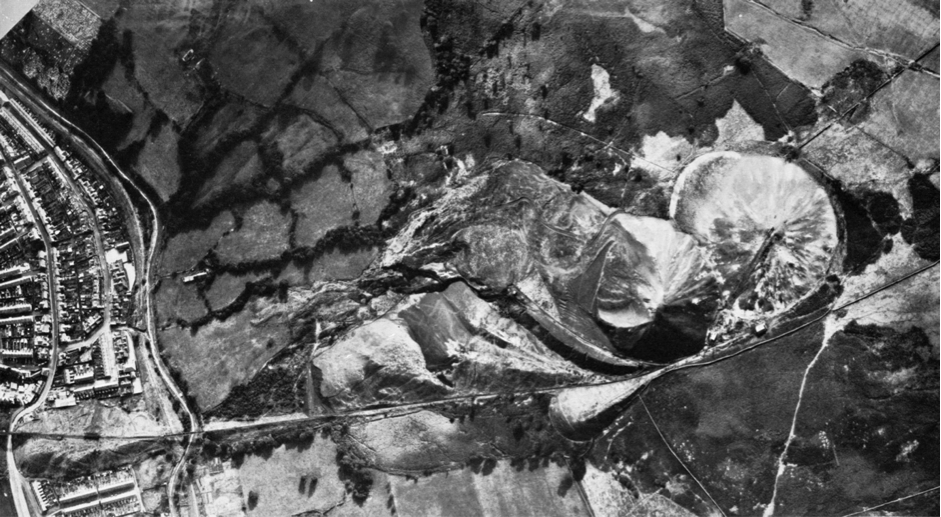Remembering Aberfan: Poetry, Death and the Landscape

Continuing our series of posts from students on module entitled ‘Death, Dying and the Dead in Twentieth-Century Britain’, Claire writes the use of poetry in memory of the Aberfan disaster.
By Claire Turner, MA Student, University of Leeds
Deathscapes, or landscapes associated with death and dying, are becoming a popular research area for historians, cultural geographers and social scientists. In particular, the notion of remembranceis gaining attention. But how do we perceivelandscapes associated with disasters? In Abersychan, Wales, the construction of a mining disaster memorialis currently underway. This memorial will transform our perception of the landscape from one that is secular to one that is sacred. The memorial will also feature a child. In this respect, it will reflect Aberfan’s memorial garden in south Wales, which commemorates the loss of 116 children in the 1966 mining disaster. So, what can one poem, written in the aftermath of the Aberfan disaster, tell us about one of Britain’s deadliest landscapes? And what can the landscape tell us about twentieth-century concepts of death and dying?
The Poem
Contemporary responses to the disaster most commonly took the form of poetry or visual art. One example is local poet Ron Cook’s ‘Where was God?’, written almost immediatelyafter the disaster. The poem can be found in a blog post commemorating fifty years since the disaster. This information tells us that the poem was, and still is, integral to understanding and commemorating the disaster. In the mid-twentieth century, Aberfan’s community was distrustful of outsiders. People also frequently stigmatised displays of emotion and the notion of psychological help. Though we have little additional information on the poet himself, this context suggests that his response to the disaster is a unique expression of emotion and trauma that might otherwise be privatised.
Site of Blame
After the disaster, Aberfan’s landscape became the subject of heated controversy. Anna Petersson, in her researchon place and memorialisation, believes that landscapes associated with death can be perceived as sites of blame. This assertion is almost certainly the case in Cook’s poem. The poem is particularly significant because it poignantly highlights the role of nature and its supposed involvement in the disaster. Cook explains how ‘…the mountain moved its awesome mass / To leave generations of dead’. In these lines, Cook vividly illustrates how the spoil tip rapidly progressed down the mountain, killing adults and children of all ages. The passage insinuates that the mountain, rather than the colliery, was responsible for owning and moving the spoil tip towards the nearby village. Cook appears to be placing the blame on nature. Interestingly, this debate concerning the role of nature is also visible in other artistic responses to the Aberfan disaster. In an article in The Guardian(1991), David Ward’s headline explainsthat the ‘Sound of Aberfan thunder echoes down the years’. Songs such as John Murray’s ‘Oh Aberfan’also conjure up images of nature by mournfully describing the spoil tip as a ‘fluid lake of death’. These examples, plus Cook’s poem, paint a picture of Aberfan’s natural landscape as threatening and capable of mass destruction.
The Role of the Senses
The use of words such as ‘thunder’ provides another interesting angle from which to approach Cook’s poem: through the senses. Cook’s poetic account of the landscape during the Aberfan disaster is also significant because it informs us that death and dying can be a sensory-immersive experience. David Ward’s use of the term ‘thunder’ hints at a loud and terrifying noise. However, in Cook’s poem, he focuses on the significance of the absence of sound. In the passage ‘The silence so still like something unreal / Hung on the morning air’, the silence contrasts the usually amplified noise of children in their school playground. Cook reminds the reader that the absence of sound can be more alarming than sound itself. Given the religious undertones of this poem, it is also possible that this silence represented God’s metaphorical silence in not answering Aberfan’s prayers. This portion of the poem is particularly relevant to historical research into the senses. Peter Coatesargues that, historically, silence was linked with wilderness. As we now know, Cook believed nature played a key role in the disaster. Coates’ assertion is particularly compelling because images of wilderness are closely tied with ideas about nature. Consequently, Cook uses the medium of the senses to communicate his belief that Aberfan is a site of blame.
Patterns of Grieving
Cook’s poem is especially noteworthy because his description of the landscape links with ideas concerning complex patterns of grieving. In particular, Cook’s poem demonstrates that unique circumstances can cause distinctive patterns of grieving. Martin Johnes, in his studyof the Aberfan disaster, argues that grief was significantly more acute in man-made disasters. Given that the Aberfan disaster was indeed man-made, Cook’s decision to blame nature suggests that his grief embodied both denial and anger. As argued by Lucy Noakes, ‘grief is a disruptive emotion’ with the ability to transform our ‘sense of self’. Cook’s poem is significant because it reveals that grief also has the ability to transform our perceptions of a landscape.
In Summary
In her recent article, Avril Maddrell argues that ‘contemporary patterns of death […] overlay historical grounds’. Interestingly, the site of the Aberfan disaster is now home to a sacred memorial garden. When looking closer at Ron Cook’s poem, written in the immediate aftermath of the disaster, it becomes clear that Aberfan’s landscape is more than just a sacred site of remembrance. While one landscape of death does overlay another, Aberfan’s deathscape contains multiple unique layers of meaning and significance.
